An Introductory Look at Shoe Wide Sizes
Let’s talk about something often overlooked in the fashion world but absolutely crucial for your comfort – Shoe Wide Sizes. You know, I once learned this lesson the hard way when I tried squeezing into regular-sized shoes because, well, they ‘looked’ my size. Spoiler alert: big mistake. It’s easy to think that just because your shoe size matches the length of your foot, all pairs will fit like a glove. But width? That’s a game-changer.
When we talk about Wide-fit footwear, we’re not just catering to people with visibly broader feet. It’s for anyone who’s ever felt the dreaded pinch after an hour or two of walking, or worse, developed blisters that make you question your life choices.
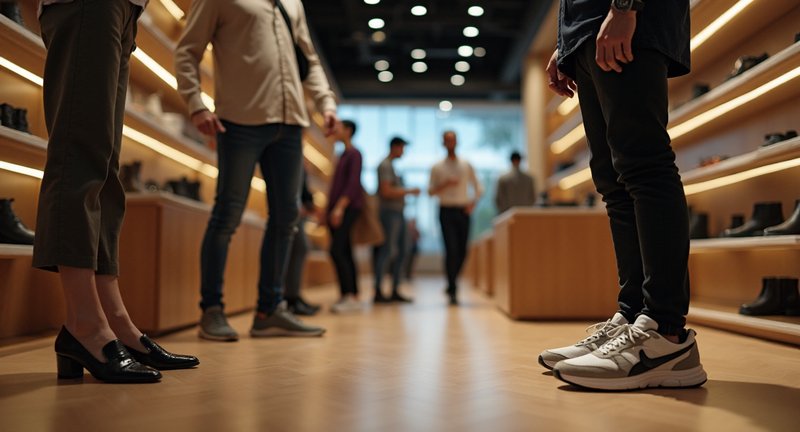
So what are the key signs that you need to consider a wide size?
- Pinching or squishing at the sides of your feet
- Tightness across the ball of your foot, even if the length seems fine
- Blisters from shoes that seem to ‘fit’ lengthwise but rub awkwardly on the sides
- Feeling like your toes are cramped, unable to spread naturally
And trust me, opting for Broader shoe sizes isn’t some kind of defeat. It’s the smart move, ensuring that your feet can breathe, spread, and strut with confidence. Whether you’re out for a casual day or standing for hours on end, giving your feet the room they deserve changes everything.
Sometimes, we’re reluctant to size up in width because we think it’ll affect the style. Well, that’s another myth to toss out. Brands these days are catering to all foot types without compromising the look. Yes, fashion and function CAN coexist – and your feet will thank you for it.
The Importance of Shoe Wide Sizes
I used to think all shoes were created equal, just in different sizes. But oh, how wrong I was! If you’ve ever felt your feet beg for mercy at the end of a long day, chances are it’s not the length of the shoe, but the width that’s causing all the fuss.
There’s something almost liberating about slipping into footwear that actually fits, not just in length but in every curve. I remember the first time I wore shoes that accommodated the full span of my foot. It felt like I had unlocked a hidden level of comfort I never knew existed.
It’s not just about avoiding blisters or pressure points, though. A proper fit can change your entire posture, shifting your balance and helping you walk with that quiet confidence we all secretly crave. There’s a reason why well-fitted shoes feel like you’re walking on air it’s because they’ve been shaped to support every part of your foot.
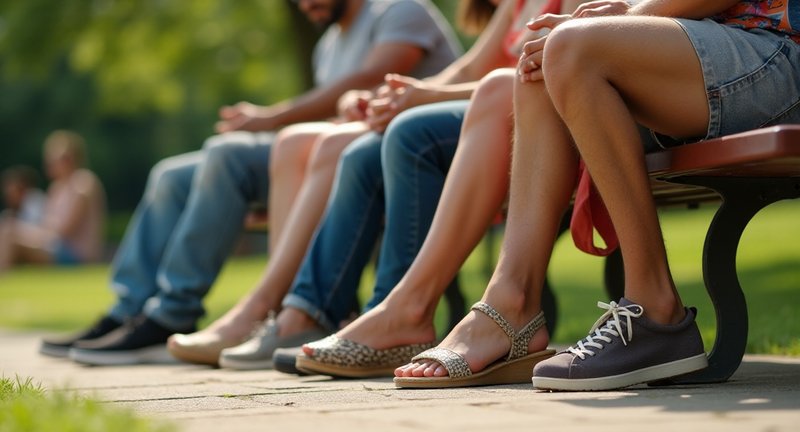
I often tell people, if your toes feel like they’re at a party but the rest of your foot is suffocating, it’s time to reconsider your shoe selection. Don’t settle for footwear that only looks good; make sure it feels just as good too.
Trust me, once you experience the joy of a well-fitted pair, you’ll never go back. Your feet deserve to stretch out and enjoy life, just like the rest of you.
Understanding Foot Widths and Sizes
Foot width is one of those sneaky details people often overlook when hunting for the perfect pair of shoes. Trust me, I’ve been there squeezing into something stylish only to realize my toes are having their own little party, cramped and uncomfortable. It’s a lesson I’ve learned the hard way: width matters just as much as length.
What makes this tricky is how foot widths vary as wildly as shoe sizes themselves. Narrow, regular, wide, extra-wide each of these options can change the game when it comes to comfort. It’s not just about “fitting” your feet into shoes but making sure those shoes fit you like a glove.
Ever noticed how some shoes hug your foot in all the right places, while others feel like you’re walking on tightrope? That’s the magic (or nightmare) of foot width. It’s a delicate balance, and one that, when understood, can turn a painful stroll into a walk on clouds. And trust me, once you’ve tasted that, you won’t settle for anything less.
But here’s the kicker finding the right width isn’t always straightforward. Manufacturers tend to be a little mysterious with their sizing charts, throwing letters like ‘B’ or ‘D’ your way without much explanation. That’s where a bit of research and, yes, trial and error, comes into play.
At the end of the day, it’s about knowing your own feet. Once you crack the code of width, you’ll find that the world of footwear suddenly feels a lot less treacherous. Consider it your secret weapon in the quest for shoe nirvana.
Importance of Proper Shoe Fit
I’ve been there. You see the perfect pair of shoes, and you’re ready to wear them everywhere, but something’s off. The fit isn’t quite right. It’s like trying to squeeze into a box just a little too small. And trust me, the discomfort will catch up with you, no matter how stunning those shoes look.
Proper shoe fit is more than just a comfort issue it’s a health thing. I learned the hard way that shoes that are too tight or too loose can wreak havoc on your feet, causing blisters, pain, and even long-term damage. Those quick fixes like gel pads? They’ll only take you so far.
Finding the right fit is about understanding your foot’s unique shape. It’s not just about length; width is crucial too. And I know, it can feel like an endless hunt, but trust me, the relief of a shoe that actually fits is worth every bit of the search.
It’s surprising how much your feet will thank you when you find that magical balance of style and fit. Suddenly, walking feels like gliding, and you forget what it’s like to limp through the day. Don’t compromise on fit. Style is important, but your comfort? That’s priceless. And believe me, you don’t want to learn that lesson after hours of walking in shoes that fight back.
Common Issues with Standard Width Shoes
Let me tell you, the struggle with standard-width shoes is all too real. I remember picking up what seemed like the perfect pair, only to discover the hard way that ‘standard’ doesn’t fit all. The most common issue is that they tend to pinch in all the wrong places ever felt that toe squeeze that leaves you hobbling by the end of the day? Yeah, it’s not pretty.
Let’s break it down:
-
Toe Crunch: Standard-width shoes are notorious for squeezing your toes into a narrow, cramped space. It’s like trying to stuff a watermelon into a sock. Not comfortable, and definitely not good for the health of your feet.
-
Heel Slippage: On the flip side, if your toes feel crushed, your heel might be doing a little dance in the back of the shoe. Too much movement back there can lead to blisters those nasty little reminders that something’s not quite right.
-
Arch Discomfort: If you’ve ever felt like the arch support is sitting in the wrong place, it’s because standard-width shoes often miss the mark on foot anatomy. Your arches end up unsupported, and trust me, that’s not something your feet will forgive you for.
-
Pressure Points: Standard-width shoes can create uneven pressure distribution. If you’re walking around with red marks or discomfort after just a short stroll, you know what I mean.
The truth is, everyone’s feet are unique, and the ‘standard’ approach to shoe sizing doesn’t always cut it. If you’ve found yourself constantly dealing with the wrong fit, you’re definitely not alone in this foot-shoe battle.
What Are Extra Wide Shoes?
When I first discovered extra wide shoes, it was like a breath of fresh air. Imagine, slipping into a pair that doesn’t squeeze your toes like they’re at a crowded concert. If your feet have ever felt trapped in a narrow, restrictive space, you know exactly what I mean.
Extra wide shoes cater to those of us with feet that simply need more room to breathe. It’s like someone finally acknowledged that not all feet fit into the standard mold, and they created these shoes to provide us with comfort without compromise.
Now, I’m not talking about just any comfortable shoe. These are crafted with more thought, ensuring every part of the foot has the freedom it craves. Think of them as a cozy hammock for your feet, where every step feels like a relaxed stroll, no matter how hectic your day might be.
The design isn’t just about width, though. It’s also about support. I’ve noticed that when my feet have the extra space they need, the rest of my body follows suit. I walk taller, I feel lighter, and even my mood shifts for the better.
If you’ve ever wondered whether an extra wide shoe could be your perfect match, trust me it’s worth the try. Your feet might just thank you later.
Identifying Your Foot Width
I’ve had my fair share of foot-fitting adventures, and let me tell you, figuring out your foot width is a game-changer. If you’ve ever felt your shoes pinch or noticed a bit too much room on the sides, you’re probably wearing the wrong size. It’s not just about the length width can make or break comfort.
Start by grabbing a piece of paper and tracing your foot. Yes, it’s that simple. Don’t worry if you haven’t done this since elementary school, we’re all going back to basics here. Once traced, measure the widest part of your foot with a ruler or tape measure.
When it comes to deciphering the results, this is where things get interesting. Your measurement will likely fall into one of the common categories narrow, standard, or wide. It’s like discovering a hidden secret about your own body.
The moment I found out I had a slightly wider foot, everything changed. The world of shoes suddenly opened up, and I could finally kiss blisters goodbye. I realized that foot width wasn’t something to overlook, and neither should you.
Once you’ve unlocked the mystery of your foot width, finding the right fit becomes a breeze. You’ll wonder why you hadn’t checked sooner trust me on this. Identifying your foot width is like knowing your body’s own little cheat code.
How to Measure Your Feet for the Perfect Fit
Finding the perfect fit for your feet can feel like solving a puzzle. It’s not just about the length of your foot, but how it fills out a shoe. I learned early on that a quick measure can spare you from a day of discomfort. Trust me, a snug fit is everything when you want to glide through your day with ease.
Start by grabbing a piece of paper, a pen, and a ruler. Place your foot firmly on the paper and trace around it. Seems simple, right? But this little ritual is the first step toward shoes that feel like they were made just for you.
Once you’ve got your outline, measure from the tip of your longest toe to the edge of your heel. This gives you your length, but don’t stop there. Measure across the widest part of your foot too. You’ll be surprised how much this affects the feel of a shoe.
It’s also essential to consider the time of day. Feet swell, especially after walking around, so measuring in the afternoon will give you the most accurate size. I once made the mistake of measuring in the morning, only to find my new shoes a bit too tight after a day of wear.
Also, don’t forget to measure both feet! One foot is often slightly larger than the other, and you’ll want to cater to the bigger one. I always find myself double-checking, just in case. With these steps, you’ll be walking on clouds in no time.
Differences Between Widths: D, E, EE, and More
Understanding the nuances of width measurements can make a world of difference when it comes to finding that perfect fit. You might have come across letters like D, E, and EE, but what do they actually mean for your feet?
When I first started paying attention to widths, it was like entering a whole new world of comfort. Let’s break down these differences:
-
D Width: This is considered ‘standard’ for men and ‘wide’ for women. If you’ve got feet that fall right into the middle of the bell curve, this is likely where you’re at.
-
E Width: A step wider than D, and still relatively common for those with broader feet. It offers just that little bit of extra space, preventing that tight, cramped feeling after a long day of walking.
-
EE Width: Now, we’re moving into seriously wide territory. If shoes often feel constricting even in wider sizes, EE might be the solution. This width caters to people who need significant space in the shoe to avoid discomfort or pain.
-
Beyond EE: Yes, there are widths even broader than this, sometimes denoted as EEE or beyond. It’s rare but necessary for some people. Once you experience the freedom of the correct width, you realize that shoe size isn’t just about length.
The goal is to avoid shoes that pinch or leave your feet swimming. Trust me, the right width can change everything, not just in terms of comfort but also in how you feel throughout the day.
Navigating the World of Shoe Wide Sizes
I’ve been there – trying to find that perfect pair of shoes only to realize the fit is all wrong because of the width. It’s not always about length; sometimes, the difference is in those small, yet crucial details of ‘Shoe Wide Sizes.’ This journey into finding the right width has been a game-changer for me and many others, especially when comfort meets style.
The tricky part is that shoe sizing can feel like a secret language. You might know your size, but width? That’s where things get interesting. ‘Wide-fit shoe sizes’ aren’t just a luxury for a select few; they’re essential for anyone whose feet demand a little more space to breathe.
When I discovered the world of wide sizes, it was as if the shoe industry finally started speaking my language. It’s not about settling for what’s available; it’s about finding exactly what fits – snug, but never too tight. If you’ve ever had to squeeze your feet into a narrow pair, you know exactly what I’m talking about.
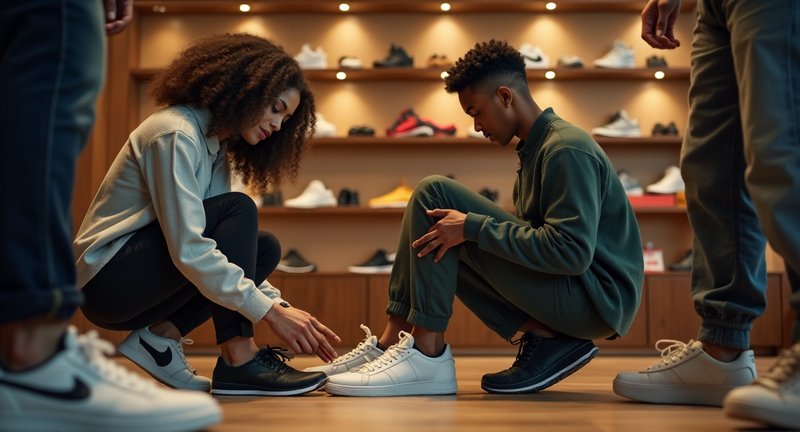
Think of it like this: your feet deserve the same attention you’d give to finding the perfect outfit. Too tight, and you’re uncomfortable all day. Too loose, and they’ll slip right off. That’s why understanding ‘Broad-width footwear options’ can really change how you approach footwear.
So, take a moment to think about your shoes. If you’ve ever felt like something wasn’t quite right, maybe it’s time to explore this lesser-known world of sizing. Trust me, once you go wide, it’s hard to go back.
Benefits of Wearing Shoes in Wider Sizes
One of the most underrated adjustments in your wardrobe is the width of your shoes. Trust me, I learned this the hard way. For years, I crammed my feet into shoes that looked amazing but left me walking like I was navigating a bed of hot coals. It wasn’t until I discovered the perks of wearing shoes with more room that my feet finally thanked me.
First off, comfort is an obvious benefit. But let’s dig deeper. When your feet aren’t squished, they can breathe. This means less sweat, fewer blisters, and no more of that dreaded feeling of your shoes biting into your skin. It’s like giving your feet permission to just relax.
Additionally, if you’ve ever dealt with bunions, hammertoes, or just plain foot fatigue after a long day, wearing shoes with extra space can make a world of difference. The foot has space to settle naturally, avoiding unnecessary pressure on the toes and sides. If you’re on your feet all day, or simply like to walk a lot, this extra room can reduce long-term wear and tear on your feet.
Here’s a short list of why more spacious shoes might be your new best friend:
- Better circulation: No more cutting off blood flow with tight-fitting shoes.
- Reduced foot pain: You avoid painful pressure points, especially after hours of wear.
- Healthier feet: It helps prevent deformities caused by constriction.
- Improved posture: When your feet are at ease, your entire body follows suit.
Take it from me, once you experience this kind of freedom, there’s no going back to the days of cramped toes.
Popular Brands Offering Wider Fit Options
I’ve often noticed how tricky it can be to find brands that cater to a broader range of foot shapes. It’s not something we talk about enough, but let me share a few names that have really nailed this. Brands like Clarks and Ecco have long been favorites of mine, offering not only comfort but a bit more room for those of us who need it.
Adidas is another brand that pleasantly surprised me. They’re known for sleek designs, but I’ve found that many of their models provide a generous fit without compromising style. It feels like they’ve recognized that a good fit shouldn’t just be limited to certain sizes or shapes.
Then there’s New Balance. A brand that practically screams ‘comfort first,’ but they manage to keep their aesthetic game strong, too. They’ve created a perfect balance between form and function, ensuring you’re not just comfortable but still looking sharp.
Dr. Martens, with their iconic boots, also come through for those in search of extra room. These boots are built tough, and yet, they’ve managed to maintain a wider fit option without losing any of that unmistakable edge. It’s fashion-forward without the pinch.
For something a bit more luxe, check out Stuart Weitzman. Known for their high-quality craftsmanship, they offer a range of fits that let you enjoy the elegance without the squeeze. Trust me, once you find a brand that understands your feet, it’s like a breath of fresh air!
Best Styles for Those with Broader Feet
If you’re anything like me, finding shoes that feel comfortable on broader feet can feel like hunting for treasure. The key? Embracing styles that offer both space and structure without compromising on style.
Chunky shoes are your best friend here. They not only provide the extra room you crave but also look effortlessly chic. Think bold sneakers or statement boots that have a bit more volume to them. They give your feet breathing space while keeping you on-trend.
Another option that’s worked wonders for me is opting for shoes with soft, flexible materials. Leathers that mold to your feet or fabrics with a bit of stretch can make all the difference. They don’t squeeze your toes, allowing you to glide through your day without a second thought.
And let’s not forget about open-toed designs. Sandals with adjustable straps? Absolutely yes. Not only do they look airy and fresh, but they also allow for that personalized fit we all deserve. No more tight-fitting nightmares, just breezy comfort.
So, next time you’re on the lookout for shoes, remember: it’s all about balancing style with that roomy, forgiving fit. Trust me, your feet will thank you.
Finding Comfort: Materials and Design Features
Finding the perfect balance between comfort and style is more than just about how a shoe looks; it’s about how it feels. I’ve spent years exploring different footwear, and trust me, it all starts with the materials and design features. You want shoes that don’t just hug your feet, but actually welcome them in.
First, let’s talk materials. It’s no secret that natural fibers like leather and suede have a way of molding to your feet over time. But modern materials like knit fabrics and memory foam take things to another level. These options are lightweight, breathable, and almost feel like a second skin. In warmer months, I opt for mesh or perforated fabrics to keep things cool. If you’re the kind who gets cold feet literally then wool-blend linings can be a lifesaver during winter.
Then, there’s the design aspect. Cushioning is king. A well-padded insole can make even the stiffest shoe wearable for hours. Look for designs with removable insoles, giving you flexibility to swap them out for something more tailored to your needs. And let’s not forget about flexibility. Stiff shoes can feel like walking in a suit of armor, so opt for styles with soft midsoles and flexible uppers.
Some key design elements that enhance comfort:
- Elastic inserts: for easy slip-on and added stretch.
- Rounded toe boxes: gives your toes room to breathe.
- Arch support: often overlooked but essential for long-term comfort.
- Shock-absorbing soles: to reduce impact on your joints.
Remember, comfort isn’t a luxury; it’s a necessity. Once you find shoes that offer these features, you’ll wonder how you ever walked in anything else.
Tips for Shopping for Wide-Fit Shoes Online
When you’re on the hunt for wide-fit shoes online, things can get tricky. I’ve been down that road before and learned a few lessons along the way.
First, always take a close look at the size guide. Different brands have their own interpretations of what ‘wide’ really means, so don’t assume it’s the same everywhere. Trust me, I’ve had shoes arrive that felt like they belonged in the narrow aisle.
Another tip read reviews carefully. Those little nuggets of wisdom from other shoppers often reveal what the product description might hide. If someone says the shoe fits snug, even if it’s labeled wide, listen to them.
One mistake I used to make was ignoring the return policy. When buying shoes online, especially if you’re trying out a new brand, make sure they offer hassle-free returns. You don’t want to be stuck with a pair that pinches.
Also, filter your searches. Many websites let you narrow things down to your specific needs. Don’t waste your time scrolling through options that won’t work for your feet. Instead, get straight to what matters.
Finding wide-fit shoes online doesn’t have to be stressful if you know the tricks. Trust me, your feet will thank you later.
We’ve Got Answers
What is a wide shoe size?
A wide shoe size refers to shoes that are designed with a broader width to accommodate feet that are wider than average. Standard shoe sizing typically focuses on length, but wide sizes are available to ensure comfort for individuals with wider feet. These shoes offer more room in the toe box and across the forefoot, which helps to avoid pinching or discomfort. Wide shoe sizes come in different width categories, such as ‘D,’ ‘E,’ ‘EE,’ and others, depending on the brand and country.
What is D or EE for shoe width?
D and EE are designations for shoe width. In men’s shoes, a ‘D’ width is considered the standard or medium width, while an ‘EE’ width is wider than ‘D’ and is designed for those who require more room. In women’s shoes, a ‘D’ width is considered wide, while ‘EE’ represents an even wider option. These width classifications help ensure that shoes fit more comfortably for people with wider feet, preventing tightness and improving overall wearability.
What are the sizes for shoe width?
Shoe widths are classified using letters or combinations of letters. Common width sizes include ‘A’ or ‘AA’ for narrow feet, ‘B’ for medium (women’s standard), ‘D’ for medium (men’s standard or wide for women), ‘E’ for wide, and ‘EE’ or ‘EEE’ for extra wide. Some brands may use additional width markers like ‘C’ or ‘4E’ to differentiate between various degrees of narrowness or width. The availability of these sizes can vary by shoe brand and type.
What size are wide fit shoes?
Wide fit shoes typically start from a ‘D’ width for women and an ‘E’ width for men, extending to ‘EE’ and beyond, depending on the degree of width required. Some brands may use more specific markers, like ‘2E’ or ‘4E,’ to indicate even wider sizes. The key feature of wide fit shoes is that they provide more space across the toe box and instep, making them suitable for individuals with wide or broad feet.
Should I size up if I have wide feet?
Sizing up to accommodate wide feet is not always the best solution. While increasing the shoe length may give you extra room, it can lead to discomfort because the shoe may not fit properly in other areas. It is better to look for shoes specifically designed in wide widths, as these will offer the necessary width without compromising on length. Wide fit shoes ensure comfort without the need to wear shoes that are too long for your feet.
How to tell if feet are wide?
To determine if you have wide feet, you can measure the width of your feet using a ruler or measuring tape. Place your foot flat on a surface and measure the widest part, usually at the ball of the foot. Then, compare the measurement with standard width charts for your shoe size. If your feet are significantly wider than the average, you likely need wide-fit shoes. Discomfort or tightness in regular-width shoes is another indicator of wide feet.
Can I wear wide fit shoes with normal feet?
Yes, you can wear wide fit shoes even if you have normal-width feet, but they may feel too loose and may not provide the necessary support. Shoes that are too wide can cause slipping and instability while walking, leading to discomfort over time. It is generally better to wear shoes that match your foot width for optimal comfort and support. However, if you prefer more room in the toe area, wide fit shoes can sometimes be an option.
Does D in shoe size mean wide?
The letter ‘D’ in shoe size indicates different widths depending on gender. For men’s shoes, ‘D’ is considered a standard or medium width, while for women’s shoes, ‘D’ represents a wide width. If you’re looking for a wider shoe than ‘D’ in men’s shoes, you would typically look for ‘E’ or ‘EE.’ Understanding these differences can help you find the correct fit, ensuring both comfort and proper foot support.
Is 4.5 inches a wide foot?
Whether 4.5 inches is considered wide depends on the shoe size and gender. For example, in men’s shoes, a foot that measures 4.5 inches across at the widest point is often considered wide if the foot length is in the smaller to medium size range. For women, a 4.5-inch width would typically be classified as wide or extra wide, especially in smaller foot sizes. Measuring your foot width and comparing it to width charts is the best way to determine if it’s wide.








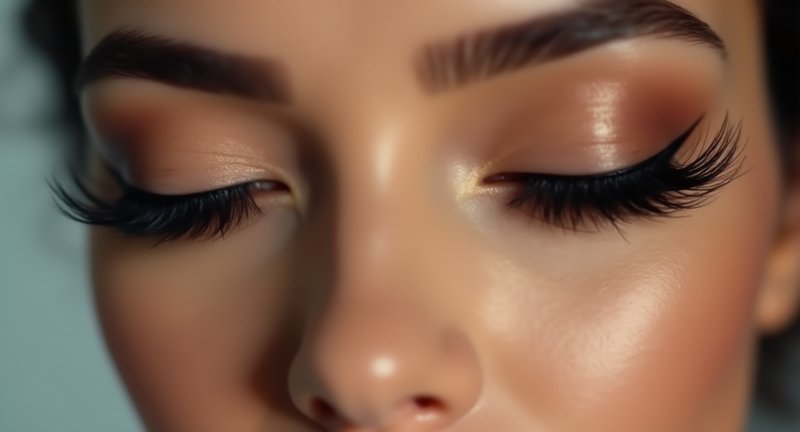

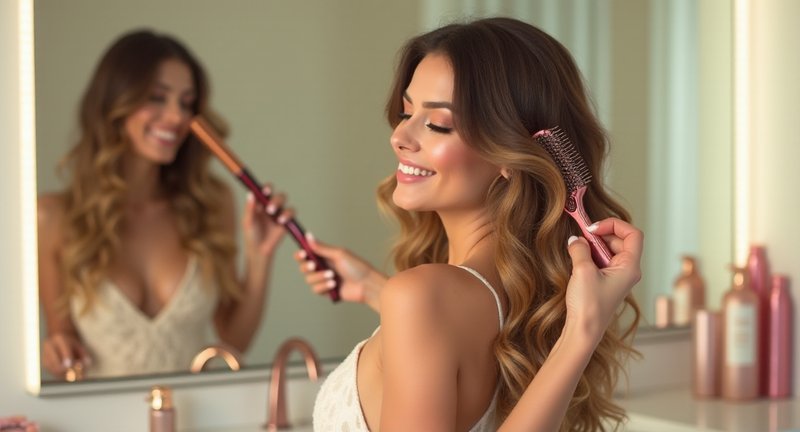
I completely relate to your experience with finding the right shoe width! It’s like a secret club, and I’m glad to hear you’ve discovered it. I’ve also struggled with the dilemma of sacrificing comfort for style. It took me a while to realize that I don’t have to choose one over the other. Once I started exploring wide-fit options, it was a revelation! My feet felt liberated, and I was no longer limping around after a day in my shoes. Plus, it’s fascinating how something as simple as shoe width can change your entire approach to fashion. I mean, who wants to feel like they’re walking on hot coals when they could strut around comfortably? And you’re spot on about giving our feet the same attention as we do our outfits; they deserve it! Thanks for sharing your journey it’s inspiring to see more people recognizing that comfort can be chic!
Oh my goodness, the width measurement revelation! I remember when I first learned about D, E, and EE widths my shoe shopping life changed forever. It’s like discovering a hidden realm where comfort reigns supreme! Your breakdown of the width categories is so helpful, especially for those of us who often feel lost in the shoe aisle. I never knew that EE was a thing until I stumbled upon it after years of discomfort. Now I can walk without feeling like my shoes are trying to cut off my circulation. The comparison of widths being a step up in comfort is spot on; it’s amazing how much a little extra space can improve your day! It’s a breath of fresh air to know that there are options beyond EE for those who need it. Your passion for foot comfort shines through in this post, and I can’t wait to share these tips with friends who are still suffering in the wrong shoes. Thanks for shedding light on this important topic!
You nailed it with the whole puzzle analogy! Finding that perfect shoe fit is definitely like cracking a code, and I love how you broke it down into such simple steps. The paper tracing method feels like a rite of passage who knew we’d be going back to school to find our perfect fit? I also made the mistake of measuring my feet in the morning, and I was left with shoes that felt like they were made for someone else by afternoon! It’s so important to measure when your feet are at their natural size after a bit of activity. Also, I find it hilarious how my left foot is always a tad bigger than my right like they have their own personalities! Your tips about measuring both feet and considering the time of day are spot on. This post is packed with wisdom that’ll have everyone walking on clouds in no time. Thanks for the great insights!
I totally relate to your foot-fitting adventures! Figuring out my foot width was indeed a game-changer for me too. Who knew a simple foot tracing could unlock so much comfort? I remember the first time I realized my shoes were pinching my toes I thought I was just having a rough day! Now that I know my correct width, shopping for shoes feels like a treasure hunt rather than a chore. I love that you pointed out the importance of measuring the widest part of the foot. It’s like finding that missing puzzle piece that makes everything fit just right. And honestly, ditching the blisters was the icing on the cake! Thanks for sharing your journey; it motivates others to take the leap and find their true fit! Your story is inspiring, and I can’t wait to measure my feet again. Cheers to happy, comfy feet!
Finding extra wide shoes was indeed a revelation for me as well! It felt like I’d finally found shoes that were made just for me. Your analogy of a cozy hammock for your feet perfectly captures the experience! It’s incredible how much of a difference that extra space can make, not just for our feet but for our entire posture and mood. I’ve noticed that since switching to extra wide options, I walk more confidently and my days feel less tiring. It’s funny how something as simple as shoe width can transform your entire day. If anyone is on the fence about trying them, I say go for it you might just find your new favorite shoes!
Oh, the struggle is real! I used to think that standard-width shoes were my only option until I realized they were actually my worst enemy. The dreaded toe crunch is no joke! It’s like they design these shoes for someone with completely different feet. The heel slippage you mentioned? I’ve had my fair share of blisters from that! I really appreciate how you broke down the common issues. It’s so important for everyone to understand that our feet are unique, and we deserve better than one-size-fits-all solutions. Your insights are a game-changer for anyone battling with fitting issues. Let’s spread the word that shoe shopping should be about comfort first!
I totally relate to your experience! It’s frustrating when you find those dream shoes, only to discover they feel like a torture device. I had a pair that I adored but ended up regretting every time I wore them. You’re spot on about the health risks too. Blisters and pain aren’t just minor inconveniences; they can lead to serious foot problems over time. I learned to prioritize fit over style after one too many unfortunate outings. It’s like the moment you find the right pair, everything changes! Walking becomes effortless, and you can truly enjoy your day. Comfort really is priceless!
You’re spot on about the importance of foot width! I can’t count how many pairs of cute shoes I’ve passed up because they just didn’t come in wide sizes. It really is a balancing act, and understanding that is key. Finding shoes that truly fit feels like winning the lottery! I’ve also noticed that manufacturers often don’t provide clear sizing information, which makes it tricky. Your advice to do some research is gold! Once I cracked the code, it felt liberating. I finally enjoy shopping for shoes instead of dreading it. Here’s to a comfortable and stylish future for all our feet!
Your insights on shoe fit really hit home! I used to be that person who picked shoes based solely on how they looked, not considering width. But once I finally invested in a pair of shoes that fit properly, it was a game-changer! I felt like I was walking on clouds, not to mention my posture improved. It’s so true that a good fit can boost confidence. Now, I make it a point to educate my friends about the importance of proper footwear. A little knowledge goes a long way! Plus, I’ve made it my mission to find fashionable wide-fit options. I’m sure I’m not the only one who appreciates a stylish yet comfortable shoe!
I can totally relate to your experience! I once forced myself into a pair of trendy shoes that were way too narrow, and let’s just say my feet were not happy. It was like they were staging a protest! Discovering wide sizes really opened my eyes. Not only did my comfort improve, but I also found so many stylish options I never thought existed. Fashion can absolutely coexist with comfort, and I’m all for it!